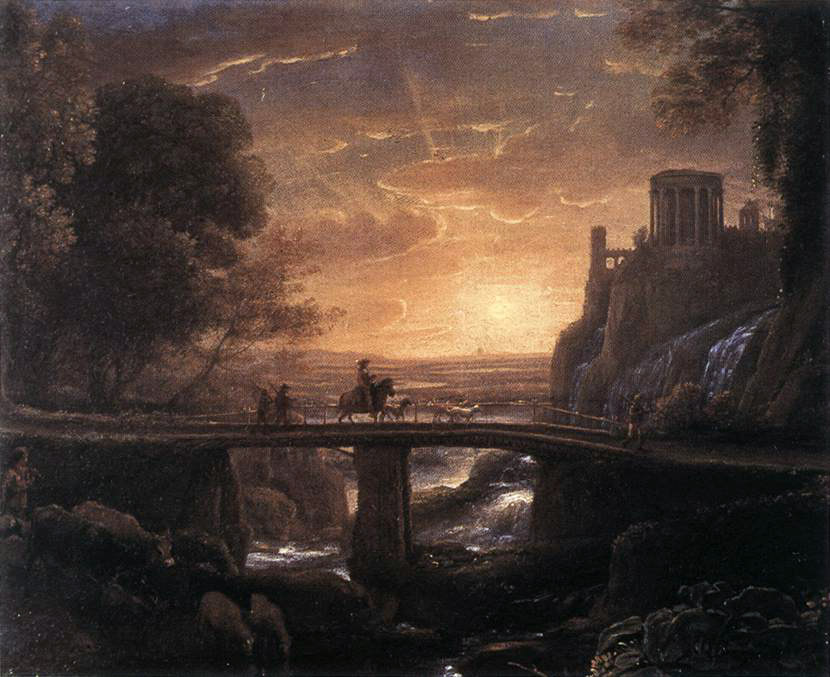Claude Lorrain, Landscape with an Imaginary View of Tipoli, 1642
10.12 x 8.5 in.
Claude Lorrain (1600-1682) was a major French painter, particularly lauded for his landscape painting. Born Claude Gellée in the Duchy of Lorraine, he is often simply known as Claude in the English speaking world, due to his extreme popularity in Britain. After learning the basics of painting from his older brother, Claude traveled to Italy where he spent most of his life. He first worked in Naples and then joined a studio in Rome. He traveled fairly extensively and had the opportunity to study nature in many parts of Europe. When Claude was working, landscape was just beginning to gain status as serious painting. Like Italian landscape pioneers before him, Claude dressed his landscapes up with Classical and religious subjects. In addition to furthering the status of landscape painting, Claude established conventions that became the standard against which future landscapes were judged, and some of his principles of composition are still in use today. His pastoral scenes were considered so perfect, that real landscapes were often judged against his paintings (the origin of the term "picturesque"). The landscape I have chosen, a view of the ancient town of Tipoli, is a beautiful little piece. About the size of a sheet of paper, the painting exhibits many of Claude's core principles of light and space. He often features figures in the middle ground, and always frames his landscapes with trees. Add a bit of Classical architecture, and you have an ideal bucolic landscape. One of the things that makes this painting interesting is that there is more action than in many of his works. While there may be figures in motion, the image of this small procession crossing the bridge creates a very different feeling. Meanwhile the sun glows immensely bright, illuminating the scene and radiating through the sky. The beauty of the mountains and waterfalls complements the large trees on the left, while the bridge crosses the gorge and water stretches out in the background. There is a soft crispness to Claude's brushwork that makes his paintings very precise, but also warm and inviting. He was extremely skilled and influential, creating beautiful scenes of the Italian countryside.

No comments:
Post a Comment